Pastoral Precision
Today, the first order of business is to get on the road toward Pais Vasco - it's a good 4 hour push under good conditions, and I wanted to try and get to the restaurant early to possibly get a look in the kitchen. I was out the door by 6:15am, which is pretty early around these parts. Unfortunately, getting out of Madrid was tougher than anticipated. I got out of the city center fine, but getting onto the autopista del norte was the tricky part. Wrong directions, or bad driving on my part left me on the west of the city, when I wanted to go north. Finally, I asked a bus driver how to get to M-40, the belt freeway around Madrid, and he directed me to continue west. Then a good long endrun around the northwest portion of the city finally put me on the right track. Personally, I have found driving here to be very difficult. I do not recommend it.
Around Spain, you may see this roadside icon: the Osbourne Bull. It's an interesting story - it was originally advertising for a particular brand of brandy de Jerez, but it became adopted by many as a sign of Spanish pride. Not everyone, however. It's 14' high, and some of the placements are so eyecatching, you can see the bull from miles away, silhouetted against the horizon.
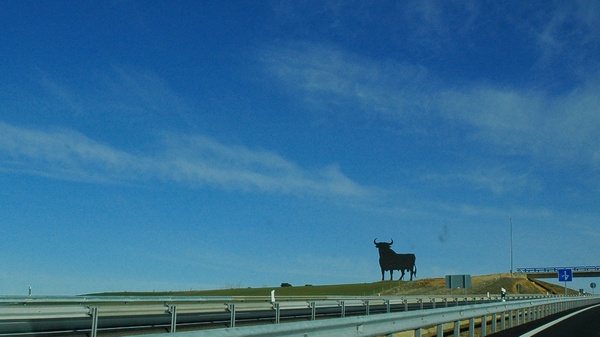
I guess this would be the Christmas tunnel. Har har. Sorry.
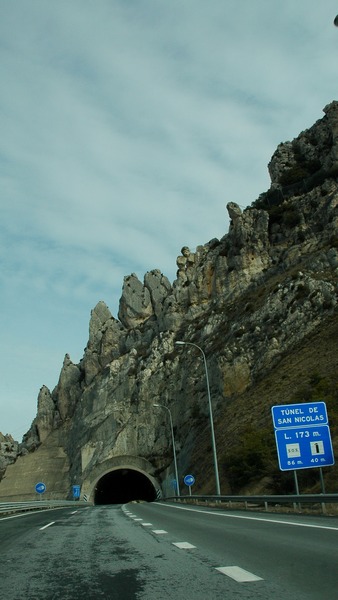
Ironically enough, even though I had trouble getting to this point and beyond, at least the roads and road signs are more consistently marked up here in the mountains of Pais Vasco. The road from this vista was on the map as G632, but in fact it is labeled G636 on the road. One of the frustrations while driving in Spain was having to stop so often to ask for directions, am I going the right way, etc. I imagine even Spaniards would have to do the same if they weren't in their home area. I started to look at it like a slowly tightening spiral - just get close to this area, then ask for directions. Then get closer, and ask for directions. Go past it, ask for directions, come back. Very time consuming.
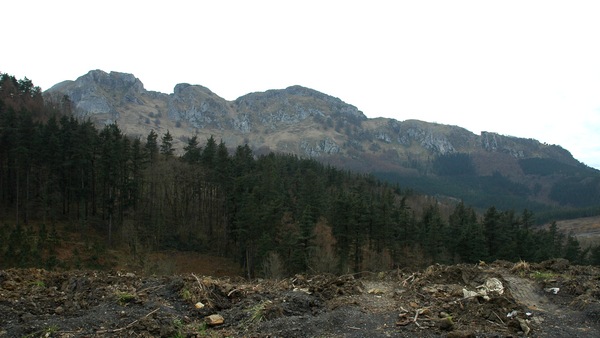
Our destination today (you're with me, right?) is Asador Etxebarri, in Axpe, near Atxondo. Those are pronounced et-che-barrr-ee, in AHZH-peh or some people say ATCH-peh, near Ah-tchon-do. Yeah. Euskera, the Basque language, is a little tricky. Fascinating, though. It's not a romance language, it's roots go back further and with less outside influences than either Spanish or French.
Here's more scenery from the back of the restaurant. From what I gather, the climate in this valley is often like this - clouds over the valley soften the light, and little shards of sunlight cut through from time to time. It's like living in a lightbox. From my table during the meal, I watched a small herd of sheep move from one corner of their pasture to the other, all under this surreal glow.
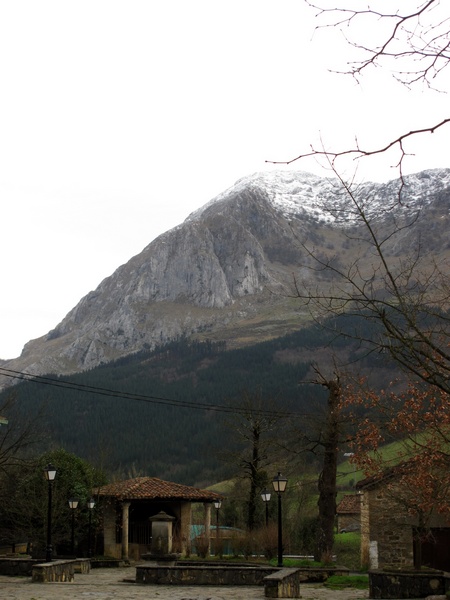
More pix and notes to come.... Clicky >>
I arrived a little over 2 hours later than I had originally wanted, but oh well. Naturally, I got the lunchtime tasting menu. The first course is a simple garlic soup. However, it had a very concentrated jamon broth as it's foundation. With chunks of tender ham skin, cooked to the point of being gelatinous, and copious amounts of garlic, cooked slowly to be mellow and sweet. A couple sat down a few tables away, and the fellow was vegetarian, but didn't eat shellfish, so I'm guessing Jewish. Well, he asked all the right questions except, is the soup made with ham. He asked two different people, is this vegetarian, they said, "No meat" because there wasn't any actual meat in the soup. Just a super rich ham stock and chunks of skin. He ate it. When I discretely asked the waitress about it, she said, "Ah, it's just a little ham..." I'm pretty sure he'll never have any "meat free" soup as tasty as this one!
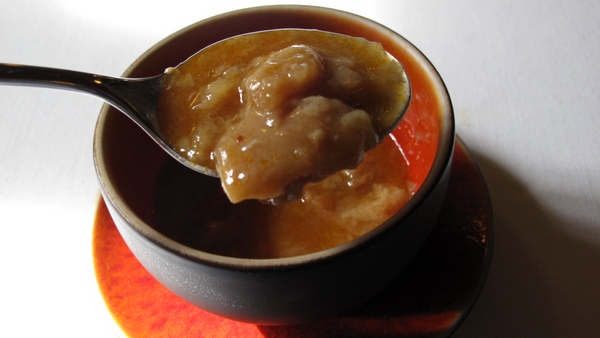
This is a ball of fresh mozzarella, pickled rhubarb and a few microgreens. Squeaky texture, well salted, not my favorite. Rhubarb was great.
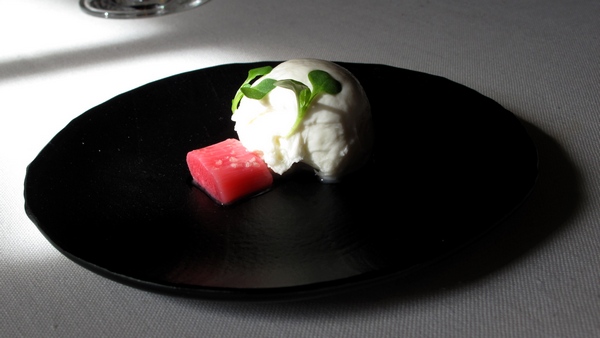
I added a foie gras course. Housemade foie terrine, caramelized pear, pear puree, toast. Excellent.
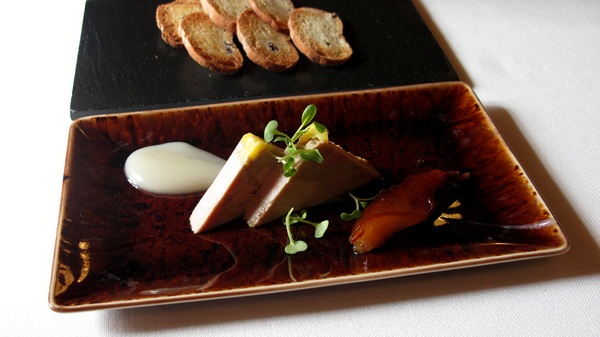
A crouton with a lightly cured sardine on top. Salted, but balanced by the natural sweetness of the fish. Or there may have been some added sweetness in the curing process.
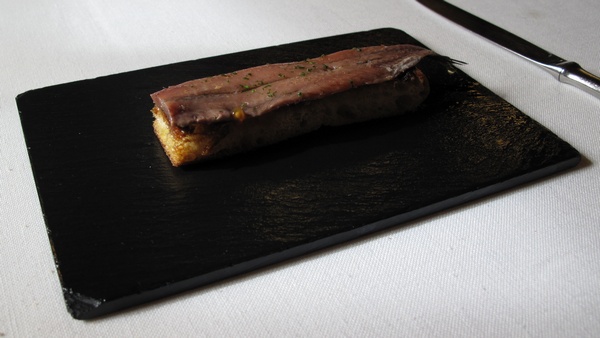
These are berberechos, berberetxos, or cockles. Most like a clam, but meatier, and the shell is ridged, rather than smooth like a clamshell. The sauce is very minimal, citrus, parsley, olive oil, but there was something yellow or orange in there as well. Maybe tomato pulp or a less sweet orange?
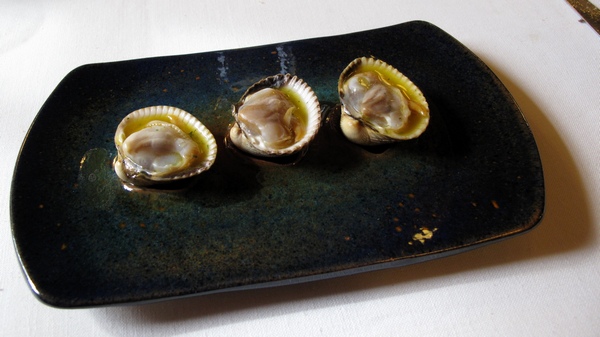
Beautifully fresh and beautifully cooked lobster, tomalley intact. Nice flavor from the grill. For shellfish on the grill, the fire should be very hot, and a little char on the shell gives a very particular aroma and flavor. As I ate the lobster, the olive oil had taken on the color and flavor of the shell. Succulent!
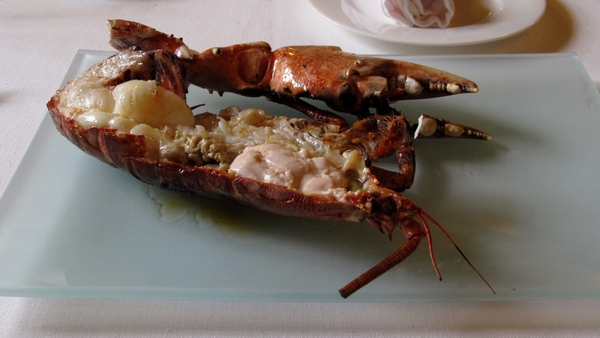
Here is an egg yolk warmed via natural hardwood smoke, covered in truffle, in some sort of puree. Maybe a thin potato puree. The yolk of an egg is already a natural emulsion, so it's the original, natural sauce. Eggs and truffles are a classic combination. The subtle smoke adds a wonderful layer of complexity. In my opinion, it's also unusual to have any smoke element with truffles, except bacon, because normally chefs want the truffles to be the star of the dish. But it is delicious.
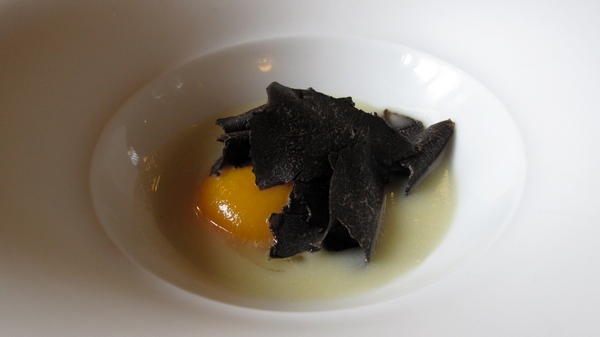
This is one of the Basque specialties - kokotxas, or ko-ko-chahss. It's the tongue and chin from the fish called hake. It is cooked very slowly so that it all turns to gelatin. There are a few threads of meat running thru the chin, but it's all about the gelatinous texture. The sauce I believe is a gelatinous fish stock, parsley, and olive oil, emulsified.
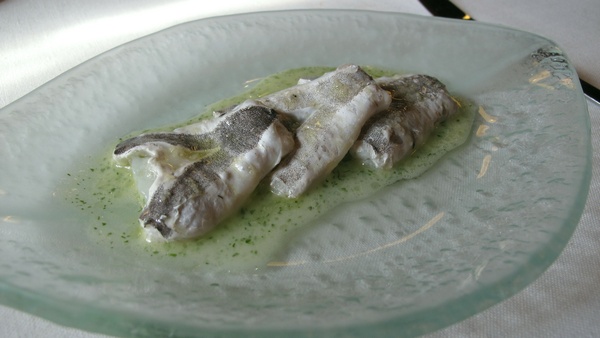
Here is a piece of mackerel, carefully cooked, with parsley sauce and braised celery. I'm not a fan of saying, "That was the best mackerel I've had in my life." It might be true for that person, but it depends on the life that they've had. I bet this would be the best mackerel that almost anyone would have ever had. If mackerel is overcooked it gets dry, despite it being an oily fish. Here there is no aspect of dryness, and so the oil of the fish is just flavorful and luxurious in the mouth. Celery was subtle in flavor but tender and pleasant to eat.
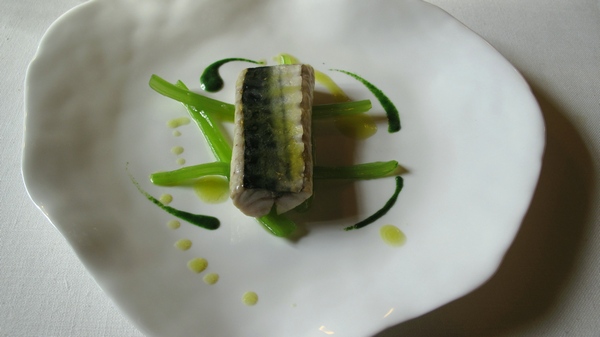
Iberico pork tartare, seasoned as chorizo. Yes, raw pork. Just barely warmed. The aroma from the fire reinforcing the smoke in paprika. Being warm, the pork releases some of its fat, resulting in a very rich mouthfeel.
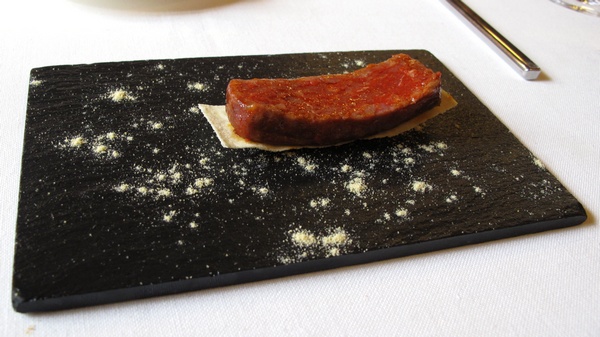
This is the chuleta, or bone-in New York steak, almost tataki style (just seared). I've seen on TV that during service, they have several fires going at once, perhaps different woods (he was a forestry service ranger at one time) to be able to achieve different effects, depending on how they want to cook the item.
Note that no juice is running on the plate. It's been carefully cooked, and carefully rested. Note also that the fat that normally surrounds the steak on the bottom has been removed after cooking - probably very charred, but intentionally so. I like a good rare steak, but this was blue. I gather that this is common at many restaurants here. But the meat was warm as well, so I think they must sear it well on one side and rest it on something just warm, like 120 degrees F. Like a dry sous vide. Or maybe sous vide, then sear, but that seems unlikely. The chew is different, and definitely the juice from the steak keeps coming. As throughout the meal, the amount of salt was superb.
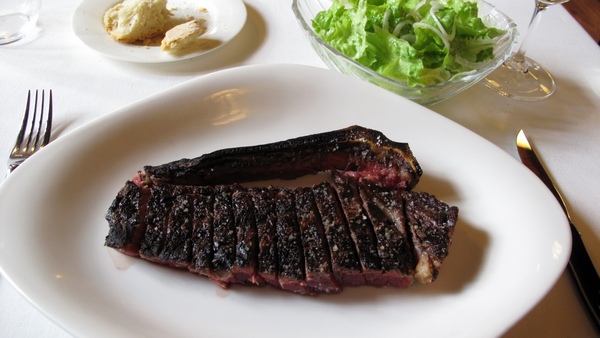
Part of the story of Etxebarri is that the chef grew up in a time where people in this area still cooked all their meals on wood burning stoves. So everything has either the taste or aroma or impression of fire and/or smoke. Mealtime means fire and smoke. Even desserts have influence from the fire. This one is usually called smoked milk ice cream, but it's actually more like ice milk - much less fat than ice cream. Still smooth and silky, but it doesn't coat the palate. It's there and then it's gone. Very sophisticated, I think. And the smokiness doesn't overwhelm it - if you didn't know what it was, you might think it was flavored with nuts or something. The red was strawberry sauce.
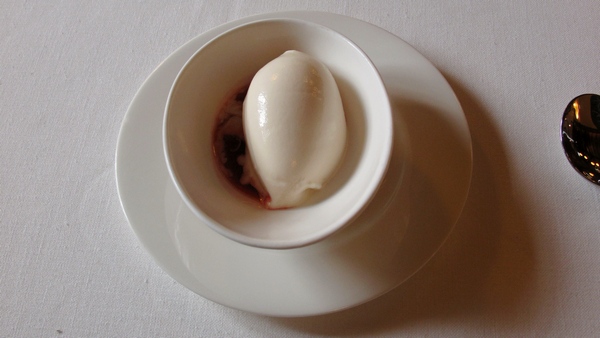
Finally, a mini Savarin (cake) in syrup with vanilla bean ice cream. Simple and delicious.
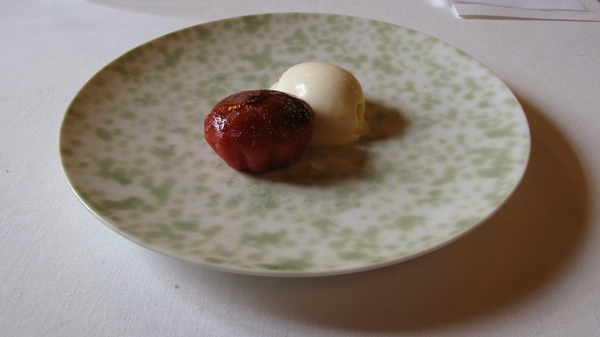
Please take my comments on all of these meals with a grain of salt, since I will have only visited there one time and eaten one series of dishes on one particular day. The manipulation of the ingredients is very minimal here, someone might think, what's the big deal, he's just grilling a steak with salt and pepper? True, most people have experienced great food from a wood fire - maybe your father cooked a great steak on your 12th birthday, or you went to the beach and grilled lobsters when you were 8 years old and you ate a whole lobster by yourself, etc. In a sense, many items here are within reach of a home cook. I think the difference is everything here is cooked with precision and intent. They consider, what is the best quality of this ingredient that we can present, and how do we cook it to exemplify that.
I don't want to overstate it, but the result is like eating in one meal, the best grilled food you've ever had, maybe from different parts of your life, plus more and better grilled food than you've ever had in your life. One course recalls eating grilled chorizos while camping, the next is something new, the next course recalls going on a road trip to find barbecued oysters, then dad's prize steak. To me, to be able to evoke memory and emotion (especially without gimmickery or pretense) through a meal is a great accomplishment. It is no small task to travel to Etxebarri, (take the train or bus) but I'm glad I did it.